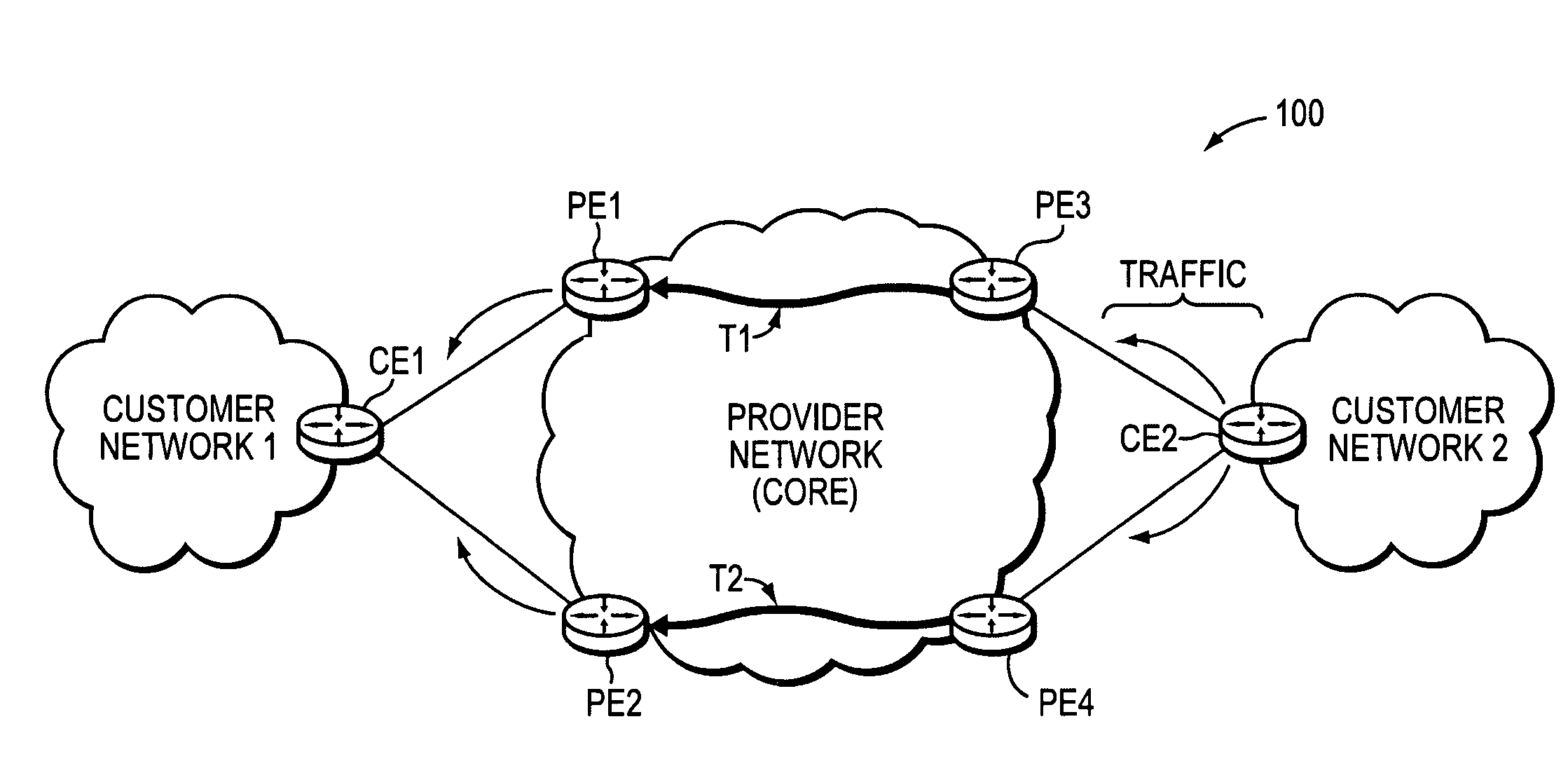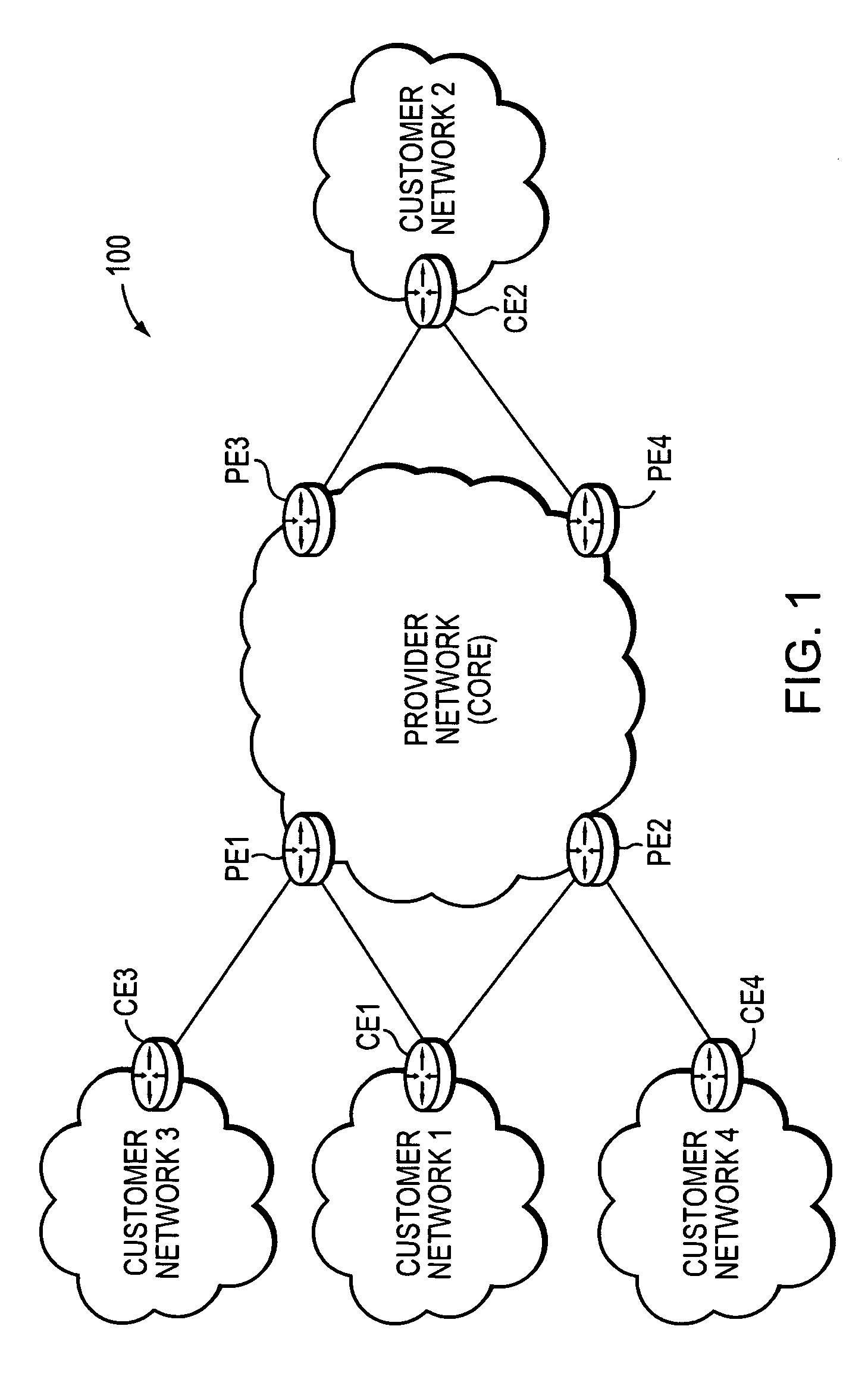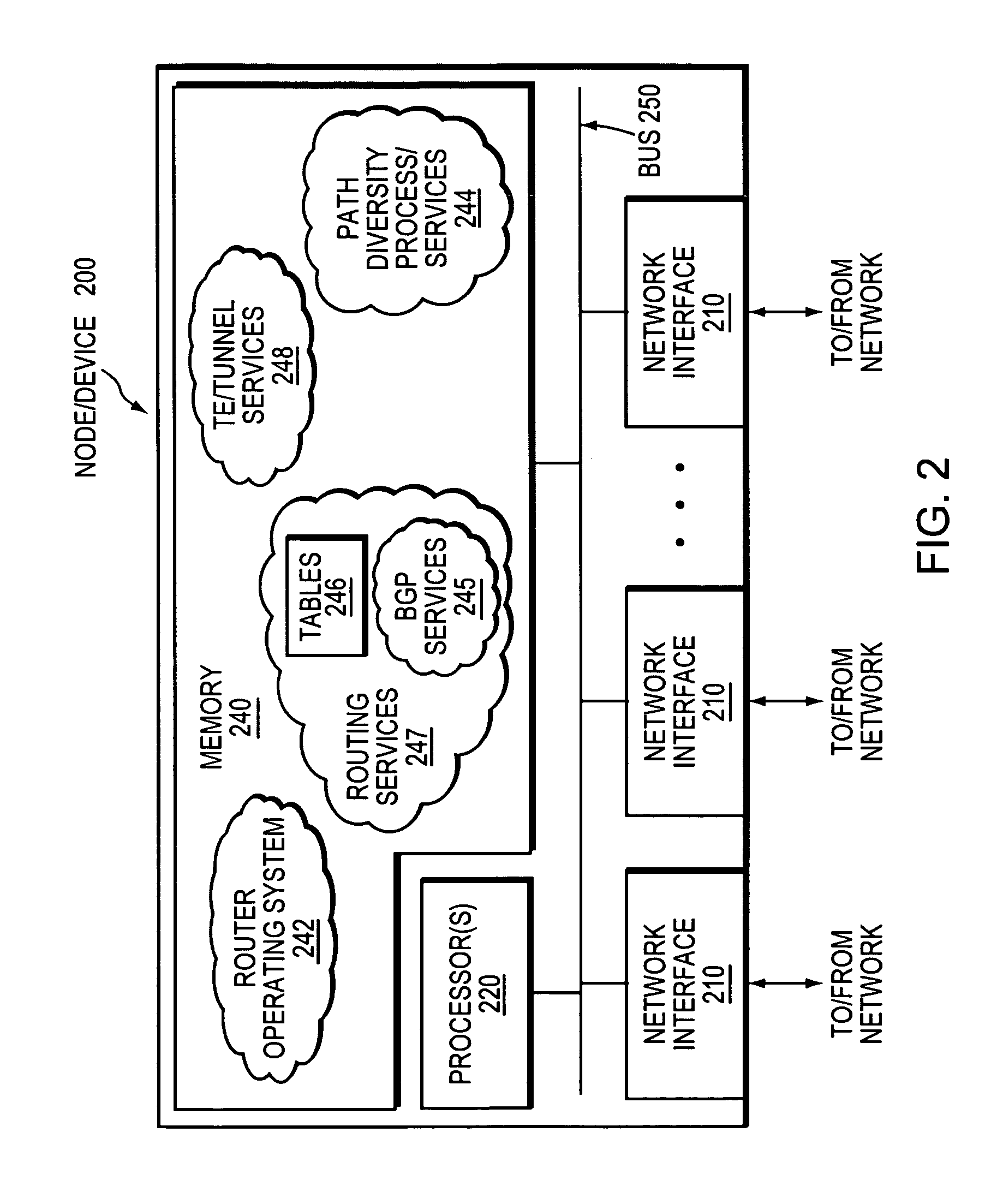Path diversity for customer-to-customer traffic
- Summary
- Abstract
- Description
- Claims
- Application Information
AI Technical Summary
Benefits of technology
Problems solved by technology
Method used
Image
Examples
Embodiment Construction
Overview
[0014]According to embodiments of the disclosure, a plurality of egress provider edge devices (PEs) sends advertisements to a plurality of ingress PEs for one or more address prefixes of a first multi-homed customer network that desires path diversity through a service provider network to a second customer network. A first ingress PE receives the plurality of advertisements, and determines whether at least a second ingress PE is multi-homed with the first ingress PE to the second customer network. If so, the first ingress PE computes a plurality of diverse paths within the service provider network from at least the first and second multi-homed ingress PEs to a corresponding egress PE of the plurality of egress PEs. If a plurality of diverse paths exists, the first ingress PE employs one of those paths to establish a first tunnel from itself to a first egress PE of the plurality of egress PEs, and the second ingress PE employs another of the paths to establish a second tunnel...
PUM
 Login to view more
Login to view more Abstract
Description
Claims
Application Information
 Login to view more
Login to view more - R&D Engineer
- R&D Manager
- IP Professional
- Industry Leading Data Capabilities
- Powerful AI technology
- Patent DNA Extraction
Browse by: Latest US Patents, China's latest patents, Technical Efficacy Thesaurus, Application Domain, Technology Topic.
© 2024 PatSnap. All rights reserved.Legal|Privacy policy|Modern Slavery Act Transparency Statement|Sitemap



